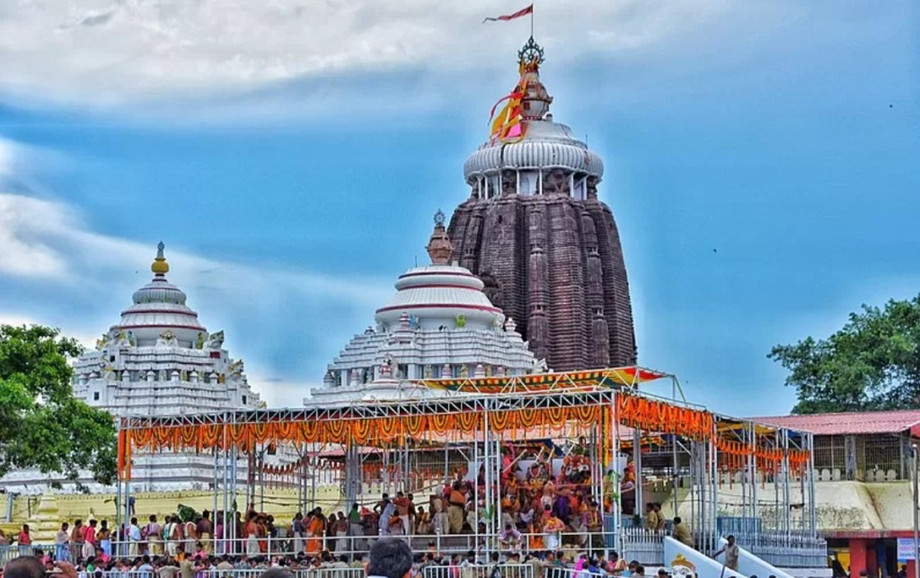The Jagannath Temple in Puri, Odisha, stands as one of India’s most revered spiritual landmarks. Dedicated to Lord Jagannath — a form of Lord Vishnu — this temple is a major pilgrimage site and one of the four holy “Char Dham” destinations for Hindus. The temple’s rituals, architecture, and cultural traditions attract millions of devotees each year. What makes the experience truly special is the temple’s precise daily schedule, where every moment is marked with divine significance. Understanding the timing of the jagannath puri allows visitors to plan their pilgrimage in a way that aligns with the spiritual rhythm of the shrine.
The temple opens early in the morning and remains active until late at night, with rituals performed continuously throughout the day. Devotees believe that every moment spent in the temple is sacred, as it follows centuries-old customs that have been passed down through generations. The daily schedule of the temple is divided into several key rituals — from the early morning “Mangala Aarti” to the late-night “Pahuda,” when the deities retire for rest. Each ritual represents a phase in the divine day of Lord Jagannath, symbolizing the connection between earthly time and celestial order.
In the early hours, around 5:30 AM, the temple doors open for the first darshan during the Mangala Aarti. This is the time when devotees can witness the deities in their most divine and serene form, freshly adorned for the day. The air is filled with the fragrance of flowers, incense, and the sound of temple bells. After this, a series of rituals such as “Mailam,” “Abakash,” and “Sakala Dhupa” follow, where the deities are offered prayers, baths, and meals. For those wishing to experience the temple’s spiritual grandeur, visiting during these early rituals is deeply fulfilling.

Mid-morning and noon are marked by the offering of the “Bhoga,” a sacred meal prepared in the temple’s ancient kitchen, one of the largest in the world. The jagannath puri kitchen is known for its unique system of cooking food in earthen pots stacked over one another, using traditional firewood. Miraculously, the food in the topmost pot cooks first — a phenomenon that has baffled scientists and devotees alike. The Mahaprasad, or the sacred offering, is distributed to devotees after being blessed by the Lord. Sharing and consuming this food is considered an act of spiritual purification and communal harmony.
In the afternoon, the temple undergoes a brief period of rest, followed by the evening rituals that bring renewed energy to the atmosphere. Around 7:00 PM, the temple hosts the “Sandhya Dhupa,” where the deities are again offered food, music, and prayers. Devotees gather in large numbers to witness the lamps being lit and the chants echoing through the ancient stone halls. The rhythmic sound of cymbals, conch shells, and devotional songs fills the air, creating an aura of divine tranquility. The temple remains open to devotees until late in the evening, when the final ritual of the day, “Pahuda,” is performed to signify the Lord’s rest.
While these daily rituals form the core of temple activities, certain times of the year hold greater significance. During festivals like the Rath Yatra, Snana Purnima, and Makar Sankranti, the timings are adjusted to accommodate grand processions and special ceremonies. The Rath Yatra, in particular, transforms jagannath puri into a sea of devotion as millions gather to witness the divine chariots carrying Lord Jagannath, Balabhadra, and Subhadra through the streets. The temple’s schedule during these days is elaborately planned to ensure that every devotee gets a chance to offer prayers and participate in the festivities.
Visitors should remember that the temple’s timing may vary slightly depending on the season and the temple administration’s schedule. Non-Hindus are not permitted inside the main sanctum, but they can view the temple’s majestic structure and rituals from nearby platforms, such as the Raghunandan Library viewpoint. It’s always best to confirm the timings beforehand and plan your visit accordingly to make the most of the experience.
In conclusion, the timing of jagannath temple puri is not just a schedule — it is a spiritual journey in itself. Each moment within the temple’s walls represents devotion, discipline, and the deep connection between humans and the divine. Visiting at different times of the day offers unique glimpses into the life of the temple — from the serene morning aarti to the grand evening rituals. Whether you are a pilgrim seeking blessings or a traveler exploring India’s rich heritage, the sacred timing of the temple will leave you with a sense of peace, wonder, and spiritual fulfillment that lasts long after you leave the holy city of jagannath puri.